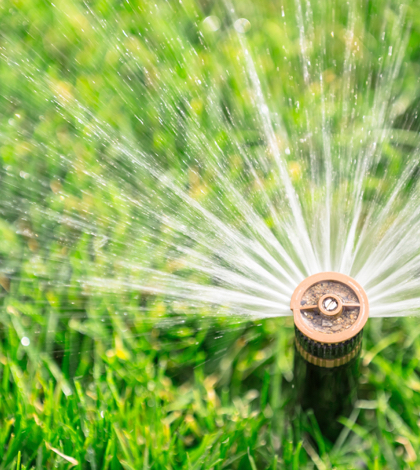The Sacramento-area Regional Water Authority (RWA) — a joint powers authority representing two dozen water providers and affiliates in the greater Sacramento area – is urging area residents to learn how to check their soil’s moisture before turning on the sprinklers. Even though virtually all of the state is no longer experiencing drought-like conditions the state’s groundwater basins remain over-drafted and continue to need the conservation efforts of all Californians. Plus, the next drought is inevitably just around the corner.
Although the state has had a most welcome and unusually wet winter and spring, it’s difficult to determine if your grass and plants need water simply by observation. Looks can be deceiving when it comes to knowing when to water your landscape.
“Research shows that people often decide to water their landscapes just by looking at their plants or if the weather is hot and dry,” said Amy Talbot, Water Efficiency Program Manager for the RWA. “Checking soil moisture with a meter or by digging down into the soil can help you more accurately deliver the amount of water your plants need to be healthy – without the waste.”
Although the RWA is a Sacramento-based entity, the advice they’re offering for determining soil moisture before turning on the hose or sprinklers is valid for any location. The RWA suggests the following as ways to monitor soil moisture levels:
- Use a moisture meter – This is the most efficient way to tell if you need to water your yard. Moisture meters feature an easy-to-read dial that indicates if the soil is dry, moist or wet. Simply push the moisture meter into the soil six to eight inches deep and check the reading. Make sure to check a few different spots in your yard as well as your potted plants. Water accordingly, based on the meter reading and your water provider’s schedule.
- Do the screwdriver test – Stick an eight-inch screwdriver into the soil. If you can push it in more than three inches below the surface, you don’t need to water.
- Dig down six to eight inches – Using a small shovel or trowel dig down the suggested depth. Grab a handful of soil and roll the soil around in the palm of your hand. If the soil easily forms a ball in your hand, you don’t need to water.
“Checking soil moisture is very much about nurturing healthy plants,” Talbot said.
But in addition to nurturing healthy plants, it’s important to know that most household water goes toward watering landscapes. A sizeable percentage of outdoor watering is actually overwatering and that which is lost to evaporation.
To assist their customers in learning how to best conserve water and still maintain landscaping the Sacramento-area RWA has made a variety of helpful videos on efficient watering available online, including:
- “How to Water Your Yard Without Wasting a Drop” using the Cycle & Soak method of watering at: https://bewatersmart.info/how-to-water-your-yard-without-wasting-a-drop/.
- “How to Have a Healthy Lawn with 30% Less Water” by upgrading to efficient rotators sprinklers at: https://bewatersmart.info/how-to-have-a-healthy-lawn-with-30-percent-less-water/.
- “How to Get Your Trees Ready for Summer” and “How to Help Mature Trees Survive the Hot Summer Months” in partnership with the Sacramento Tree Foundation at: https://bewatersmart.info/get-your-trees-ready-for-summer/ and https://bewatersmart.info/how-to-water-your-mature-trees/.
 California Water News Daily Your Source For Water News in California
California Water News Daily Your Source For Water News in California


